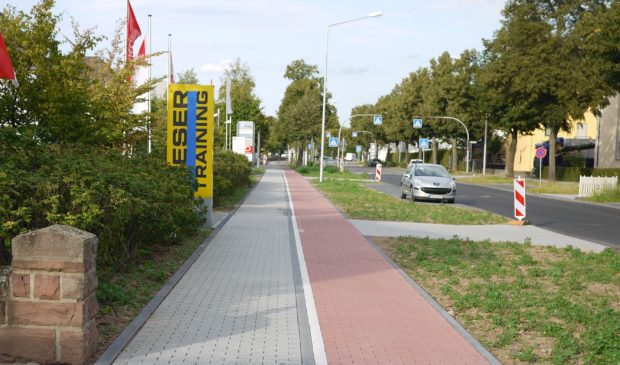Sidewalk Master Plan recommendations move forward
Thursday, January 19, 2017 by
Caleb Pritchard An overhaul of Austin’s sidewalk regulations took a small but significant step forward Wednesday night after a vote held by a lesser-known body.
The Planning and Zoning and Platting commissions’ Codes and Ordinances Joint Committee recommended the initiation of changes to the city code that, among other things, could introduce fines to property owners who allow vegetation to clutter sidewalks and streets.
The proposed changes are rooted in the updated Sidewalk Master Plan and Americans with Disabilities Act Transition Plan that City Council approved last summer.
Joel Meyer, the Austin Transportation Department’s pedestrian coordinator, and John Eastman, the sidewalk project manager with the Public Works Department, briefed the committee on what Meyer called the “high-level things we have proposed.”
Those proposals include code revisions that address vegetation maintenance, sidewalk construction in new subdivisions, commercial driveways and fee-in-lieu options.
Eastman explained that the changes would add to the code specific boundaries along streets, sidewalks and urban trails where trees, shrubbery or other plant life must be contained. Failure to do so would be a Class C misdemeanor, which carries a fine of up to $500.
“We really don’t want to be issuing tickets,” Eastman said. “We want the landowner to take care of the vegetation.”
The code revisions would also require developers to build sidewalks simultaneously with street construction in new subdivisions. Under the current requirements, builders install sidewalks during housing construction, which can leave gaps in platted subdivisions that take years or decades to be fully built out.
Under the proposed changes, commercial driveway owners would be responsible for maintaining the sidewalk portion of their curb cuts, while also ensuring they remain ADA-compliant. The measure is one way the city will encourage those property owners to reduce their driveway spaces in order to reduce conflicts between vehicles and pedestrians.
The most contentious of the proposals on Wednesday night involved the update to the fee-in-lieu policy, by which builders who meet specific criteria can pay a lump sum instead of building a required sidewalk. That money would go toward pedestrian infrastructure projects in the same general area.
Eastman told the committee that the changes would transfer the discretion of determining fee-in-lieu applicability from landowners to the city.
That notion itself didn’t inspire controversy as much as the idea of the fee-in-lieu policy itself did.
Commissioner Betsy Greenberg of the Zoning and Platting Commission claimed that the current fee is actually cheaper than building the sidewalk itself.
The Planning Commission’s Nuria Zaragoza suggested that the low fee is a boon to builders. She asked, “Are we really charging what is responsible to charge, or are we putting those costs on the rest of the community that really should have been on this individual who is developing?”
Eastman explained that the cost of sidewalk construction is context-sensitive and depends on a number of factors, including the need for retaining walls. He also conceded that the city does undercharge its fees but noted that the decision was made by political leaders. He said that a higher fee-in-lieu could be burdensome on lower-income property owners who may not be able to afford fees that are three times higher than the current rate of $7 per square foot of sidewalk.
Nonetheless, after the briefing and when the motion was made to recommend the initiation of the code changes, Greenberg attempted to offer an amendment suggesting an increase in the fees. Zaragoza, however, countered that the step would be unprecedented in her experience on the joint committee. In light of that, Greenberg withdrew the amendment, and the recommendation passed 6-0, with Planning Commissioner Fayez Kazi absent.
After the meeting, Meyer told the Austin Monitor that the Planning Commission is next in line to consider the proposed code amendments. He said that staff members are hoping the entire process will take only nine months and that the recommended changes to the Land Development Code will be written into the CodeNEXT draft, the debut of which later this month will feature placeholder language in anticipation of the changes.
Photo by 123df made available through a Creative Commons license.
The Austin Monitor’s work is made possible by donations from the community. Though our reporting covers donors from time to time, we are careful to keep business and editorial efforts separate while maintaining transparency. A complete list of donors is available here, and our code of ethics is explained here.
You're a community leader
And we’re honored you look to us for serious, in-depth news. You know a strong community needs local and dedicated watchdog reporting. We’re here for you and that won’t change. Now will you take the powerful next step and support our nonprofit news organization?









